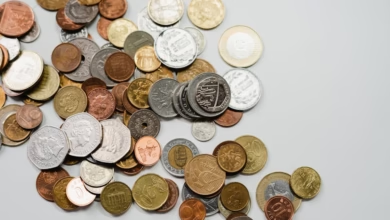Exploring Gold Futures and Options: A Comprehensive Guide to Speculating on Gold Prices and Investment Strategies

In the ever-evolving landscape of financial markets, gold remains a shining beacon for investors seeking stability and growth. With its historical reputation as a safe haven asset, gold continues to be a focal point for both novice and experienced investors alike. As global gold demand fluctuates due to factors such as inflation, geopolitical tensions, and changes in central banks' gold reserves, understanding the intricacies of gold investment becomes crucial. This article delves into the world of gold futures and options, exploring how these derivatives allow traders to speculate on gold prices and capitalize on market trends.
We will begin with a comprehensive guide to gold futures, outlining how they function and their role in the gold market. Next, we'll navigate the complexities of gold options and how they can enhance investment strategies. Finally, we'll analyze various investment opportunities, from physical gold and gold bullion to gold ETFs and collectibles, highlighting the diverse avenues available for those looking to engage in the gold trade. Whether you're interested in gold mining, gold recycling, or the intersection of gold and cryptocurrency, this article aims to provide valuable insights into the gold market analysis that can help inform your investment decisions.
- 1. Understanding Gold Futures: A Comprehensive Guide to Speculating on Gold Prices
- 2. The Role of Gold Options in Investment Strategies: Navigating the Gold Market Trends
- 3. Analyzing Gold Investment Opportunities: From Physical Gold to Gold ETFs and Beyond
1. Understanding Gold Futures: A Comprehensive Guide to Speculating on Gold Prices
Gold futures are a crucial component of the gold market, allowing investors to speculate on future gold prices without needing to hold physical gold. This financial instrument can be particularly attractive for those looking to engage in gold investment without the hassles associated with storing and securing gold bullion, bars, or coins.
Understanding how gold futures work requires knowledge of the underlying factors that influence gold prices. These can range from global market trends and central banks' gold reserves to the impact of inflation and geopolitical uncertainty. Gold is often viewed as a safe haven asset, meaning that during times of economic instability, investors flock to gold as a means of preserving wealth. This behavior is particularly relevant in today’s economy, where inflation concerns can drive up demand for gold as a protective measure.
When speculating on gold prices through futures, traders enter contracts that obligate them to buy or sell gold at a predetermined price on a specific date in the future. This allows them to capitalize on expected shifts in gold market trends. For instance, an investor anticipating rising gold prices might purchase a gold futures contract, betting that the price will exceed the contract price by the expiration date. Conversely, if the investor expects prices to fall, they might sell a futures contract for a profit.
Gold futures also provide an avenue for diversification within a broader investment strategy. They can be used alongside other gold investment vehicles, such as gold ETFs or gold mining stocks, to create a balanced portfolio. Moreover, with the rise of technology in finance, trading gold futures has become more accessible, enabling even small investors to participate in the gold trade.
In addition to traditional factors influencing gold prices, modern dynamics such as gold recycling, luxury gold markets, and the rise of gold and cryptocurrency partnerships are reshaping how investors approach gold futures. The global gold demand continues to be influenced by various sectors, including jewelry, technology, and central banks' purchasing strategies, making it essential for anyone interested in gold market analysis to stay informed about these developments.
In summary, understanding gold futures is integral for anyone looking to speculate on gold prices. By leveraging these derivatives, investors can navigate the complexities of the gold market, capitalize on gold price fluctuations, and potentially secure their financial future in an ever-evolving economic landscape.
2. The Role of Gold Options in Investment Strategies: Navigating the Gold Market Trends
Gold options play a crucial role in shaping investment strategies for those looking to navigate the complexities of the gold market trends. As a safe haven asset, gold has historically attracted investors during periods of economic uncertainty, inflation, and geopolitical instability. By utilizing gold options, investors can hedge their positions or speculate on future price movements without needing to directly purchase physical gold or gold futures.
Investors can benefit from various gold options strategies based on their market outlook. For instance, buying call options allows investors to speculate on rising gold prices while limiting their risk to the premium paid for the option. Conversely, put options can provide a safeguard against declining gold prices, making them a valuable tool in a diversified gold investment portfolio.
The current global gold demand is influenced by several factors, including central banks’ gold reserves and the evolving landscape of gold mining and production. With growing interest in sustainable gold mining practices and the implications of gold recycling, investors can align their strategies with ethical considerations while still targeting potential profitability.
Gold ETFs (exchange-traded funds) have emerged as a popular way to gain exposure to gold prices without the need to physically hold gold bullion, bars, or coins. These funds often track the gold market analysis, reflecting the performance of gold prices and providing liquidity to investors. Additionally, as the relationship between gold and inflation becomes more pronounced, options trading can help investors capitalize on expected price fluctuations driven by inflationary pressures.
Furthermore, the rise of gold and cryptocurrency discussions has opened new avenues for investment. Options on gold can serve as a hedge against the volatility often associated with cryptocurrencies, providing a more stable investment environment. Overall, gold options not only enhance an investor's toolkit in the gold market but also allow for strategic positioning amidst shifting market dynamics, including trends in gold technology and luxury gold products.
In summary, incorporating gold options into investment strategies enables investors to navigate the gold market trends with a more nuanced approach, capitalizing on price movements while managing risks associated with the gold trade and its inherent fluctuations.
3. Analyzing Gold Investment Opportunities: From Physical Gold to Gold ETFs and Beyond
When exploring gold investment opportunities, investors can choose from a variety of options beyond just purchasing physical gold. Each method has unique benefits and risks, making it essential to analyze the gold market trends and understand the different avenues available for investment.
Physical gold remains a popular choice, particularly in the form of gold bullion, gold coins, and luxury gold jewelry. Investors often view physical gold as a safe haven asset, especially during times of economic uncertainty and inflation. The enduring value of physical gold has made it a staple in many portfolios, not just as a hedge against inflation but also due to its intrinsic worth. However, considerations such as storage and insurance costs should be factored into any investment decision involving physical gold.
For those looking for a more liquid investment, gold ETFs (Exchange-Traded Funds) provide a compelling alternative. Gold ETFs track the price of gold and offer investors exposure to gold market prices without the need to physically hold the metal. They are particularly appealing for those interested in gold coins investing or gold bars but who prefer the convenience of trading on the stock exchange. As global gold demand continues to fluctuate, gold ETFs can be an effective way to capitalize on gold price movements without the complications of gold ownership.
Moreover, advancements in gold technology and sustainable gold mining practices have led to increased opportunities in the gold market. With a growing emphasis on ethical sourcing and environmental responsibility, sustainable gold mining initiatives are gaining traction, attracting a new wave of socially-conscious investors. Additionally, gold recycling has emerged as a viable option, allowing investors to capitalize on existing gold reserves while contributing to a more sustainable future.
In recent years, there has also been a noticeable shift in how gold interacts with other asset classes, including gold and cryptocurrency. The emergence of digital currencies has prompted a re-evaluation of traditional investment strategies and has piqued interest in the correlation between gold prices and cryptocurrency valuations.
Ultimately, understanding gold production, refining processes, and the dynamics of the gold trade is vital for making informed investment choices. Whether it's investing in gold futures, gold mining stocks, or diversifying with gold collectibles, each option presents distinct risks and rewards. By conducting thorough gold market analysis and staying informed about central banks' gold reserves and global market trends, investors can navigate the complexities of gold investment and make strategic decisions that align with their financial goals.
In conclusion, navigating the complexities of gold futures and options offers a unique opportunity for investors looking to speculate on gold prices and capitalize on market trends. With a comprehensive understanding of gold futures and the strategic use of gold options, investors can effectively manage their portfolios in a volatile market. As a safe haven asset, gold continues to attract attention, especially amid inflation concerns and fluctuating economic conditions.
Investors should also consider the broader landscape of gold investments, including physical gold, gold ETFs, and collectibles such as gold coins and luxury gold jewelry. Additionally, understanding the implications of gold mining practices, from sustainable mining to recycling, can influence investment decisions and align with ethical considerations.
As global gold demand remains robust, driven by central banks' gold reserves and the evolving relationship between gold and cryptocurrency, thorough market analysis becomes essential. Whether you are exploring gold bullion, gold bars, or potential gold smuggling risks, staying informed about gold market trends will empower you to make educated investment choices. By leveraging the insights gained from this article, investors can navigate the gold trade with confidence, ensuring their strategies align with both current market dynamics and future opportunities.





